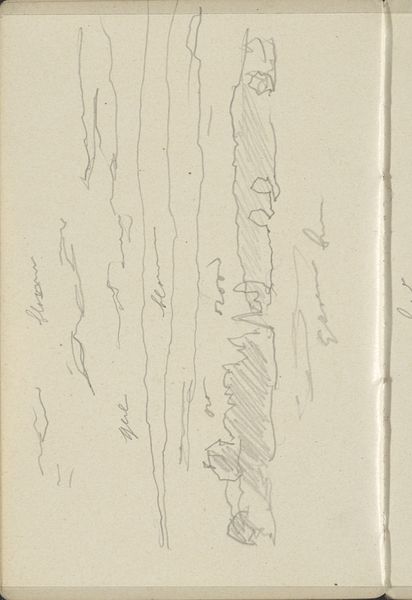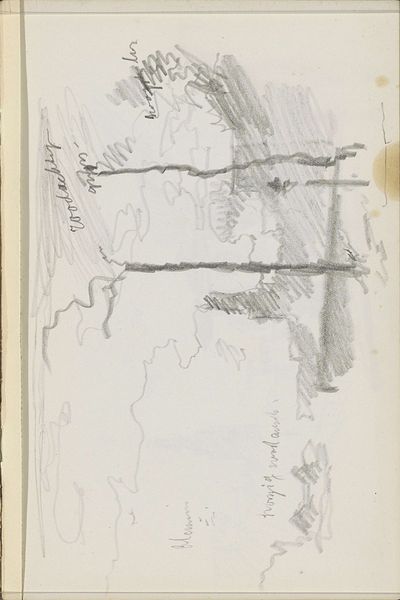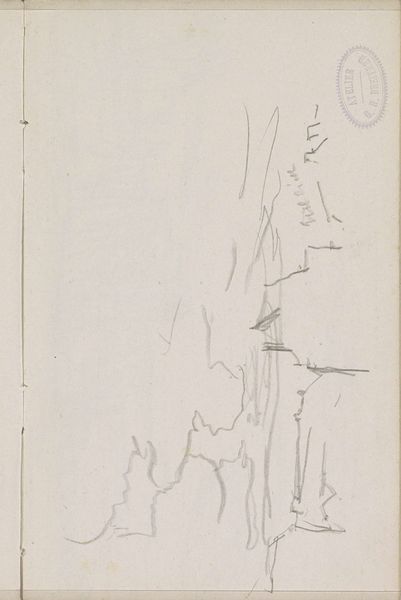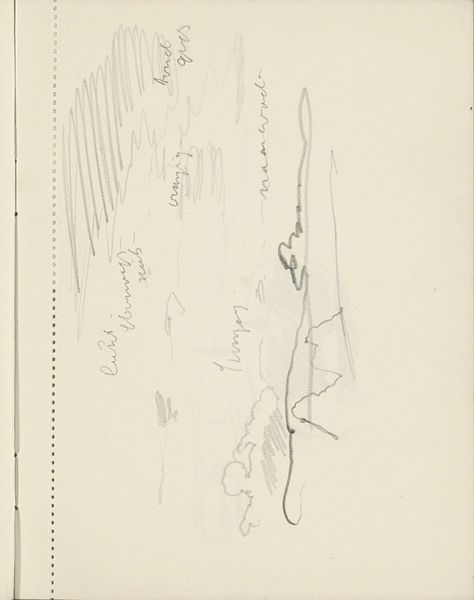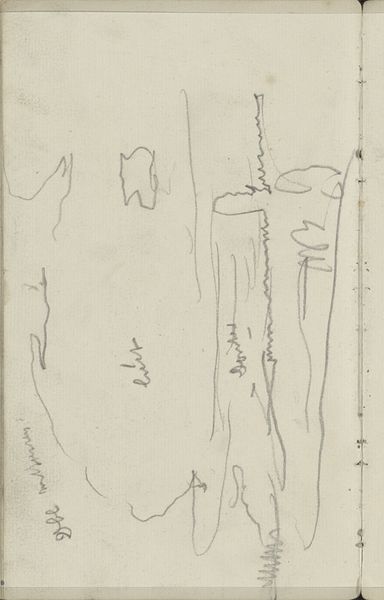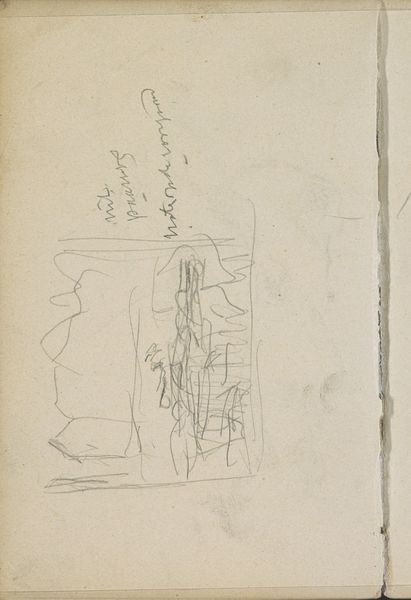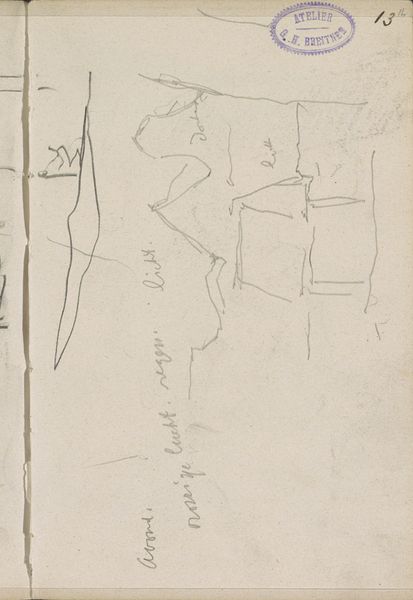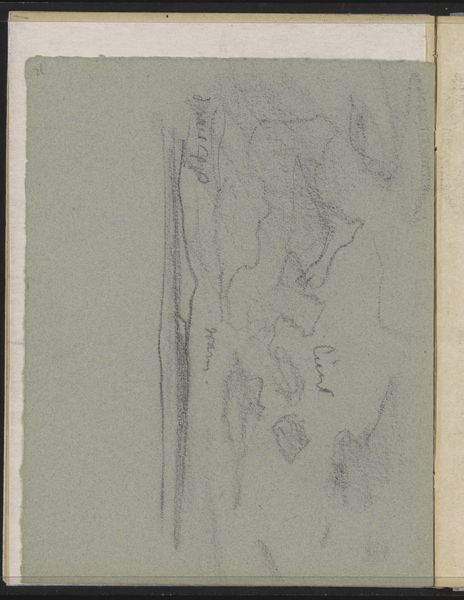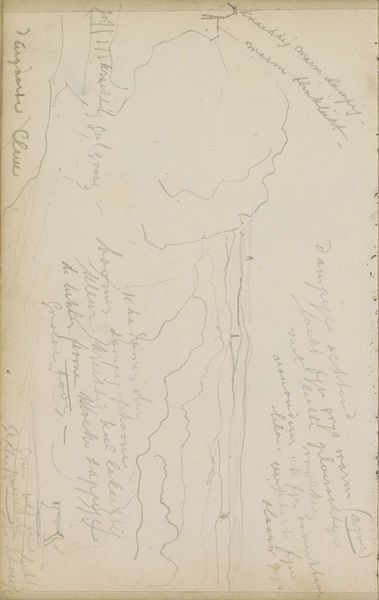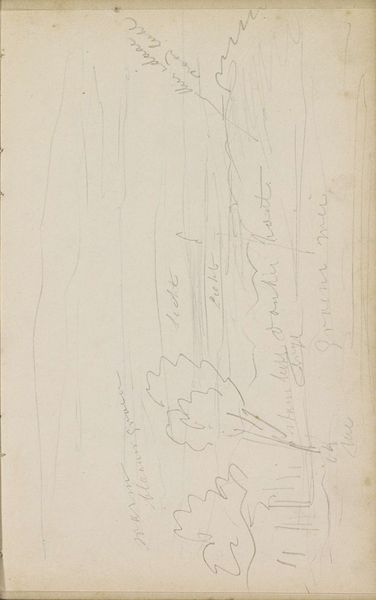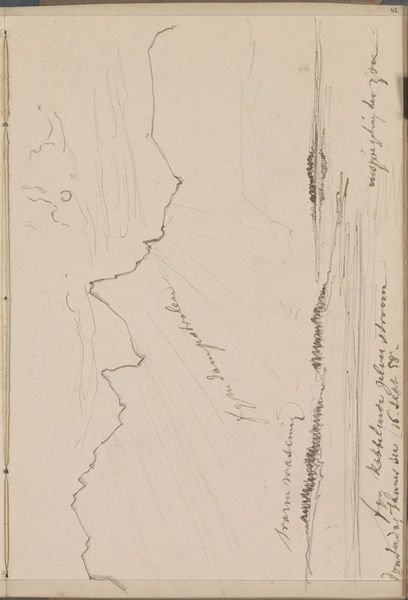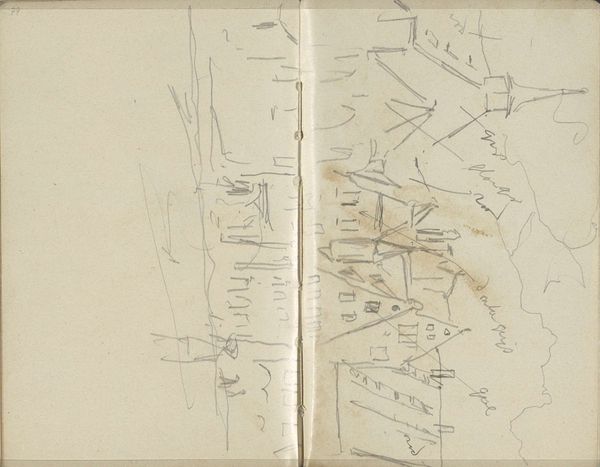
drawing, pencil, graphite
#
drawing
#
landscape
#
pencil
#
graphite
Copyright: Rijks Museum: Open Domain
Editor: This is "Landschap", or "Landscape," a graphite drawing by George Hendrik Breitner, from around 1915-1916, currently housed here at the Rijksmuseum. It looks like a quick sketch. I notice the handwritten notes and the very sparse lines – almost as if he just wanted to capture the barest essence of a scene. What do you make of it? Curator: It whispers, doesn’t it? I imagine Breitner, a man known for capturing the bustling streets of Amsterdam, suddenly finding solace in a quiet landscape. Perhaps he’s yearning for something more permanent than the fleeting moments of city life. The hasty lines – they’re like shorthand for emotions, don’t you think? The slight blurriness evokes not so much the representation of mountains and hills, but perhaps more so a sense of memory… like a landscape seen in a dream. I wonder what drew him to capture this particular scene. Editor: I see what you mean about the dreamlike quality. And I hadn't considered it in contrast to his cityscapes. Curator: These sketches sometimes offer us a more intimate glimpse into an artist's mind, I think. It's almost as if he's speaking to himself in the visual language of line and tone, but leaving us clues nonetheless. It is evocative in its raw quality. Don't you get the impression this isn't about capturing topographical accuracy so much as trying to grab an elusive mood, an echo of nature's presence? Editor: I do now. Before, I saw it as just a sketch, but now I see it’s more like capturing a feeling. So, this goes beyond a simple geographical record. Curator: Precisely! And isn’t it marvelous how a few simple pencil strokes can evoke so much, hinting at deeper things! These private notations become very public. Editor: Definitely gives you something to ponder. Curator: Indeed. And that’s the charm of these fleeting glances into an artist’s creative soul.
Comments
No comments
Be the first to comment and join the conversation on the ultimate creative platform.
